Rust is a fungal disease that affects a wide variety of plants, including important crops such as wheat, barley, corn, coffee, tomato, and many tree species. It is caused by different species of fungi of the genus Puccinia, which mainly develop on the leaves of plants.

In this video, we will see a description of what rust is, how it develops, and symptoms in coffee, corn, and wheat.

There are several types of rust, each specific to certain plants or groups of plants, but they share common characteristics in their life cycle and symptoms. These fungi produce spores in pustules or spots of yellow, orange, or brown on the leaves, stems, and, in some cases, fruits of infected plants. These spores can be carried by the wind over long distances, facilitating the spread of the disease.
Rust is more common in regions with warm and humid climates, where spores can germinate and develop more easily. Favorable conditions for the spread of rust include moderate temperatures (fifteen to twenty-five degrees Celsius) and high relative humidity. Therefore, the disease tends to be more prevalent during the rainy season or in areas with frequent irrigation.
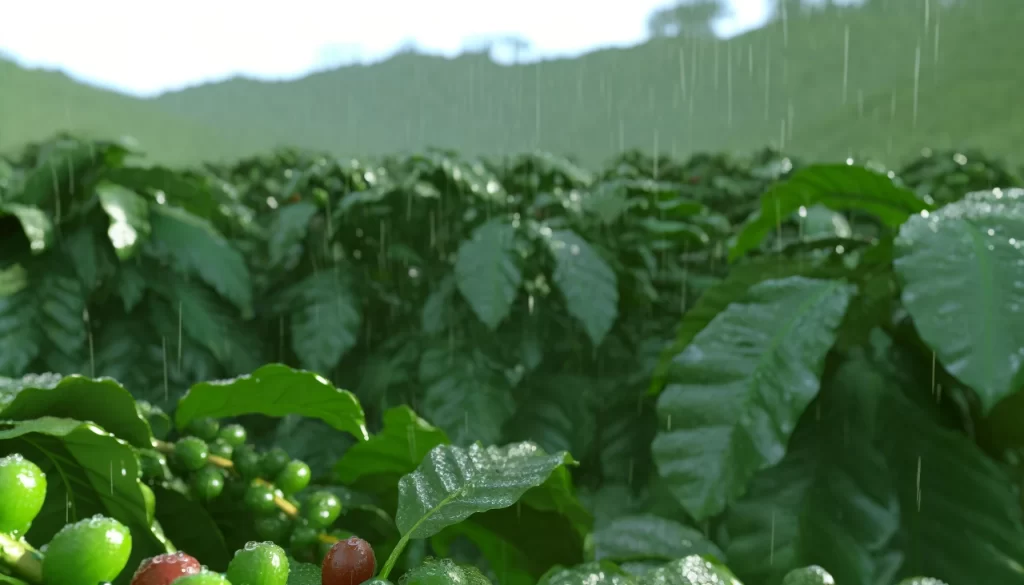
Coffee Rust
Coffee rust is a fungal disease caused by the fungus Hemileia vastatrix. This disease can have a significant impact on coffee production and quality if not properly controlled. Symptoms of coffee rust include:
Leaf spots: Infected coffee leaves show yellowish or orangish spots on the upper side of the leaf. These spots are caused by the pustules containing spores of the fungus and can be circular or oval in shape.

Leaf discoloration: As the infection progresses, infected leaves may turn yellow and then brown. This can lead to premature defoliation of the plant, negatively affecting the plant’s ability to photosynthesize and produce food.
Weakening of plants: Coffee rust can weaken plants by reducing their ability to absorb nutrients and water from the soil. This can lead to poor growth, lower fruit production, and lower quality of harvested coffee.
Reduced yield: When coffee rust severely infects a plantation, it can significantly reduce crop yield. Affected plants produce fewer fruits, and these fruits may have inferior quality due to the stress caused by the disease.
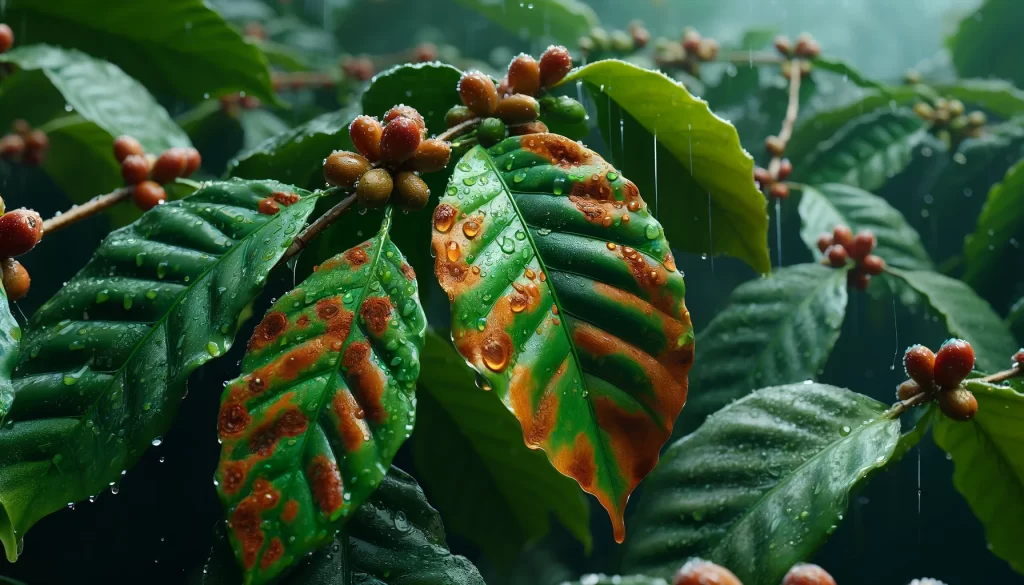
Pustule development: In advanced stages of infection, pustules may form on the underside of the leaves. These pustules contain fungus spores and are a characteristic sign of the presence of the disease.
Corn Rust
Corn rust is a fungal disease caused by the fungus Puccinia sorghi. Although less common than rust in other crops such as coffee or wheat, it can occur and affect corn yield if conditions are favorable. Symptoms of corn rust include:
Leaf pustules: One of the most obvious symptoms of corn rust is the presence of pustules, which are small yellow to orange protrusions on corn leaves . These pustules contain spores of the fungus and may appear scattered over the leaf surface.

Leaf discoloration: As the infection progresses, infected leaves may develop areas of discoloration, ranging from pale yellow to darker brown. These discolored areas may be a sign that leaf cells are dying due to fungal activity.
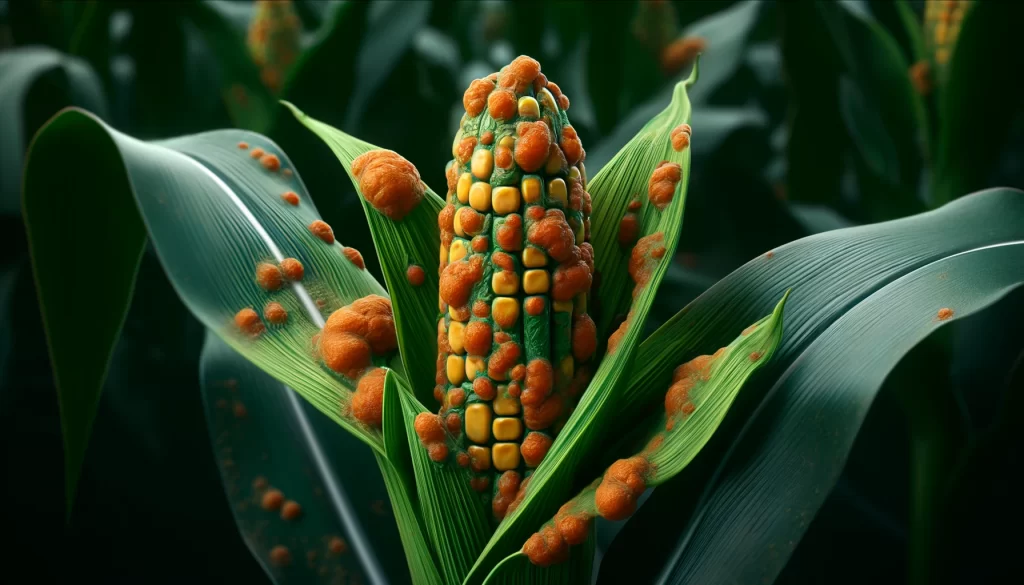
Reduction of leaf area: The presence of rust can cause premature shedding of infected leaves, resulting in a reduction in the available leaf area for photosynthesis. This can negatively affect corn yield by decreasing the plant’s ability to produce carbohydrates and, consequently, corn grains.
Weakening of plants: Corn plants severely affected by rust may show signs of overall weakness, such as slower growth, reduced vigor, and lower production of ears. This can be especially noticeable under conditions of severe infection and in areas where the disease spreads rapidly.
Wheat Rust
Wheat rust is a fungal disease caused by different species of fungi of the genus Puccinia, with the most common being Puccinia triticina and Puccinia graminis. These fungi can infect all aboveground parts of the wheat plant, including leaves, stems, spikes, and glumes. Symptoms of rust in wheat can vary depending on the fungal species and the plant’s developmental stage, but generally include the following:
Leaf pustules: The presence of small pustules on the leaves is one of the most characteristic symptoms of wheat rust. These pustules can vary in color from yellow to orange, brown, or black, depending on the fungal species and the stage of infection. The pustules contain large quantities of fungal spores and may be scattered across the leaf surface.

Leaf discoloration: As the infection progresses, infected leaves may show areas of discoloration surrounding the pustules. These areas can be yellow, orange, or brown and may expand as the disease advances. In severe cases, leaves may turn completely yellow or brown and die prematurely.
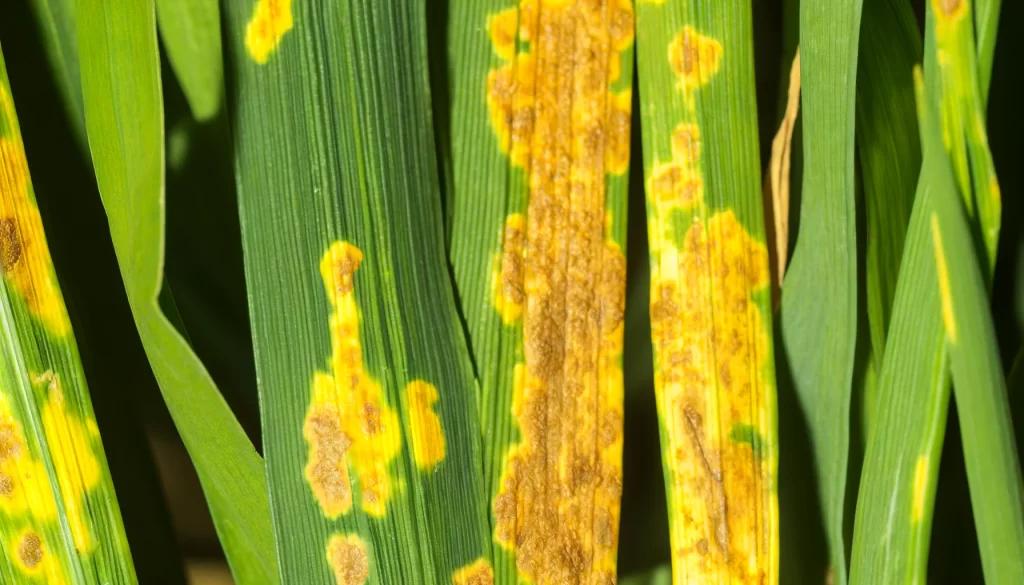
Plant weakness: The presence of rust can weaken the wheat plant by reducing its ability to photosynthesize and transport nutrients and water. This can lead to poor growth, lower grain production, and, in severe cases, plant death.
Damage to spikes and grains: In some cases, wheat rust can infect spikes and glumes, which can negatively affect grain development and quality. Severe infections can result in smaller, deformed, or wrinkled grains, as well as a lower number of grains per spike.
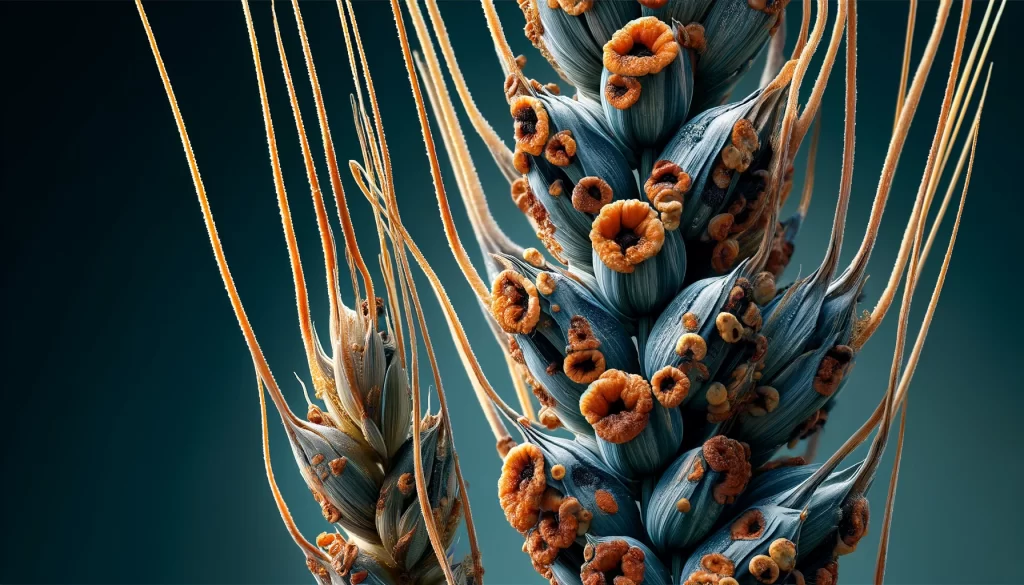
Treating rust in wheat, coffee, and corn involves a combination of preventive and control measures that may vary depending on the crop and specific conditions. Here are some general strategies for treating rust in each of these crops:
Pruning: Pruning and removing branches infected or severely affected by rust can help reduce disease spread within the plantation.
Fungicides: Applying specific fungicides for rust control according to agricultural expert recommendations. It is important to follow application instructions and respect safety periods.

Shade management: Maintaining good shade management within the plantation can help reduce humidity and improve air circulation, which can reduce rust incidence.
Fertilization management: Maintaining an adequate fertilization program can strengthen plant resistance to diseases, including rust.

Removal of infected crop residues: Removing and destroying residues of infected crops at the end of the growing season can help reduce the presence of rust spores in the field.
 AgronoBlog – Agriculture Blog
AgronoBlog – Agriculture Blog 